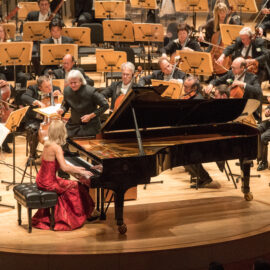THE TRAGIC CURSE OF RIGOLETTO

Verdi’s Rigoletto is one of the most celebrated operas in history. First performed in 1851, the story follows the life of Rigoletto, a hunchbacked court jester in the service of the licentious Duke of Mantua. Rigoletto is known for his sharp tongue and his ability to amuse the Duke, but his life is turned upside down when he becomes involved in a curse that sets off a tragic chain of events.

The curse in Rigoletto is at the heart of the opera’s plot. The curse is spoken by Count Monterone, a shamed father whose daughter was seduced by the Duke. Monterone confronts the Duke and Rigoletto in public, and Rigoletto tries to intervene by mocking Monterone’s righteous anger. The Count turns on Rigoletto and curses him, saying that he will suffer for his role in the Duke’s immoral behavior.
The curse is a powerful force that haunts Rigoletto throughout the opera. He becomes obsessed with the idea of the curse, and he spends much of his time trying to figure out how to avoid its effects. His attempts to protect himself and his daughter, Gilda, ultimately lead to tragedy.
The curse in Rigoletto is a symbol of the destructive power of vengeance. Monterone’s curse is a manifestation of his desire to punish the Duke for his immoral behavior, but it ends up causing harm to innocent people. Rigoletto, who is not directly responsible for the Duke’s actions, becomes a victim of the curse, as does his daughter, Gilda.
The curse also highlights the role of fate in the lives of the characters. Rigoletto’s attempts to protect his daughter from the curse only serve to hasten her tragic fate. The curse is an example of how the actions of one person can have far-reaching consequences that are beyond their control.
Verdi’s Rigoletto is a powerful exploration of the human condition, and the curse is one of the most memorable elements of the opera. It serves as a warning about the dangers of vengeance and the role of fate in our lives. The curse is a reminder that our actions have consequences, and that sometimes, we are powerless to control the events that shape our lives.

Stage director Kathleen Smith Belcher commented on staging Pacific Symphony’s production of Rigoletto: “I think it is important to acknowledge how omnipresent the idea of the curse is throughout the course of the opera. I wanted to keep the opera in a time period where educated people could believe in the power and reality of this curse laid on Rigoletto by Monterone in the first act, so the costumes are very traditional.”
Smith Belcher continued, “We wanted to further push the idea of the curse, fate, and that Rigoletto’s life is a house of cards ready to fall at any time so we are using tarot cards to help tell our story. There will be a few cards hanging in the air and spread out on the playing area as well as projected in a way that makes the audience feel as if they are IN a tarot card. We have a projection designer who will animate the cards subtly, so for example, death’s head can slowlyturn and look out at the audience, or a tarot card can flip, thus changing the meaning. I’m excited about using the cards to not only help delineate time and place, but to underscore the power of the drama. Ultimately, it’s important to me to tell this tragic story about revenge, justice, and forgiveness and how we can get so twisted up in these big emotions that we make terrible, tragic choices.”



It’s no coincidence that the opera’s original title was La maledizione (“The Curse”), and Pacific Symphony’s production will emphasize that fateful curse throughout the three-act opera.

